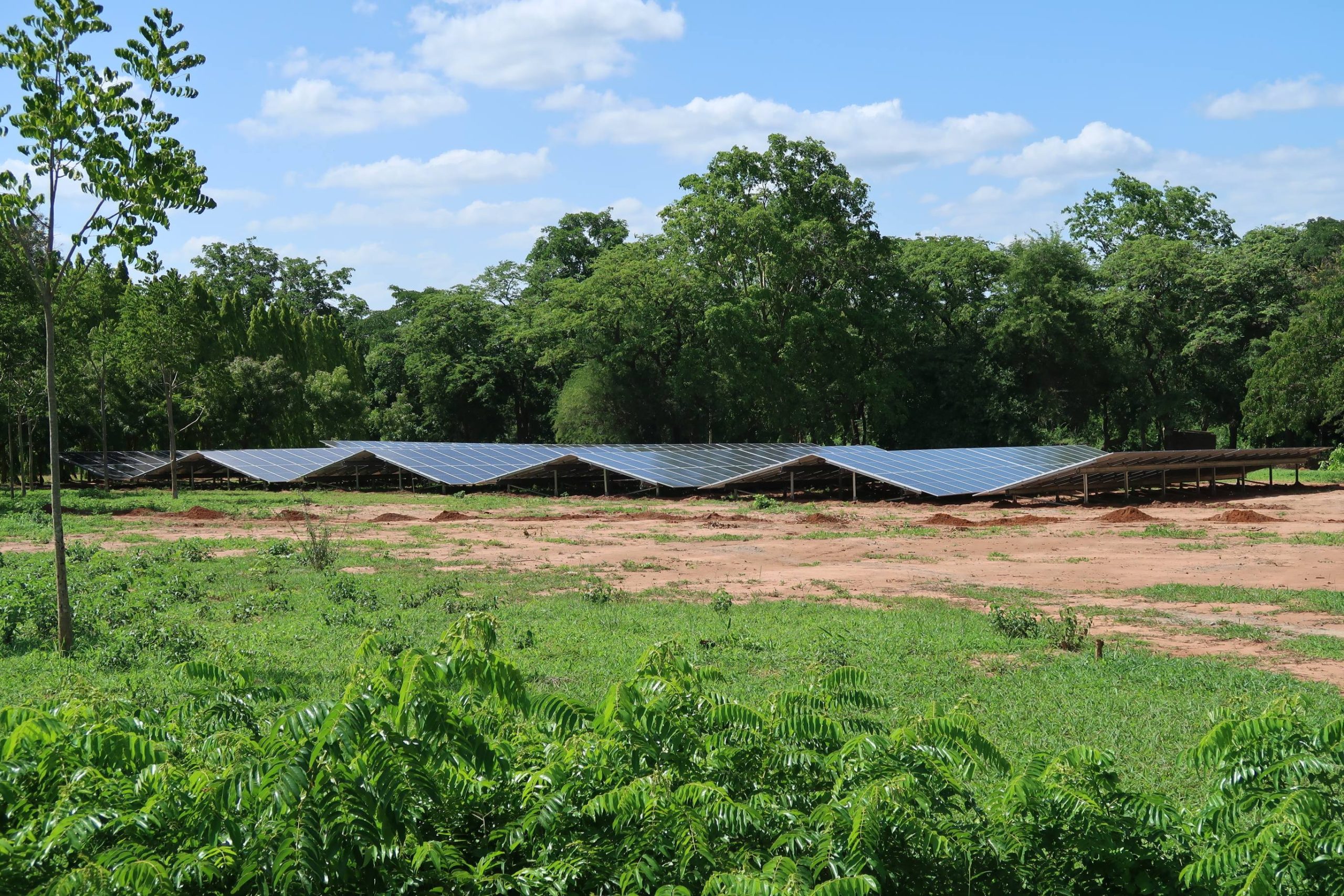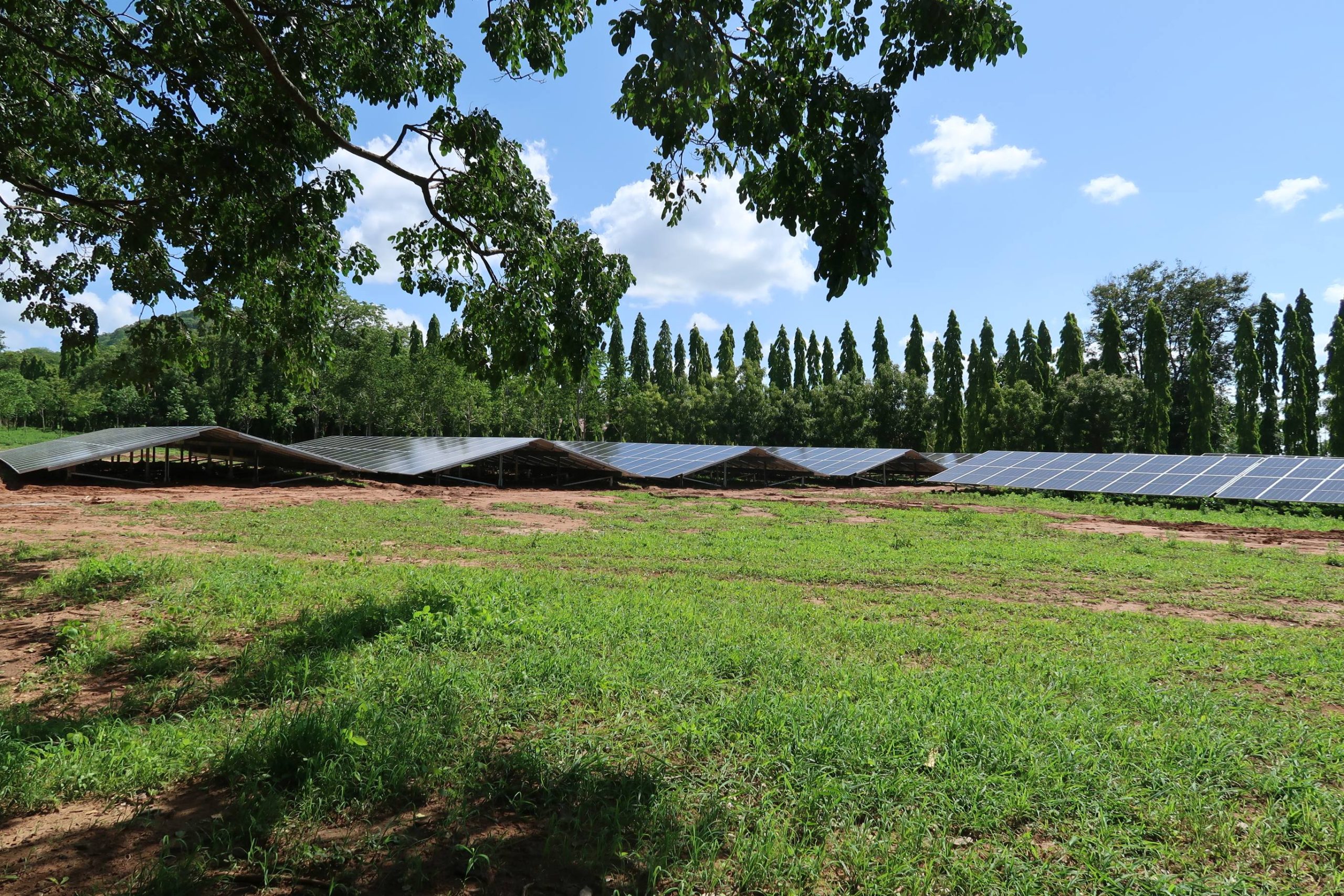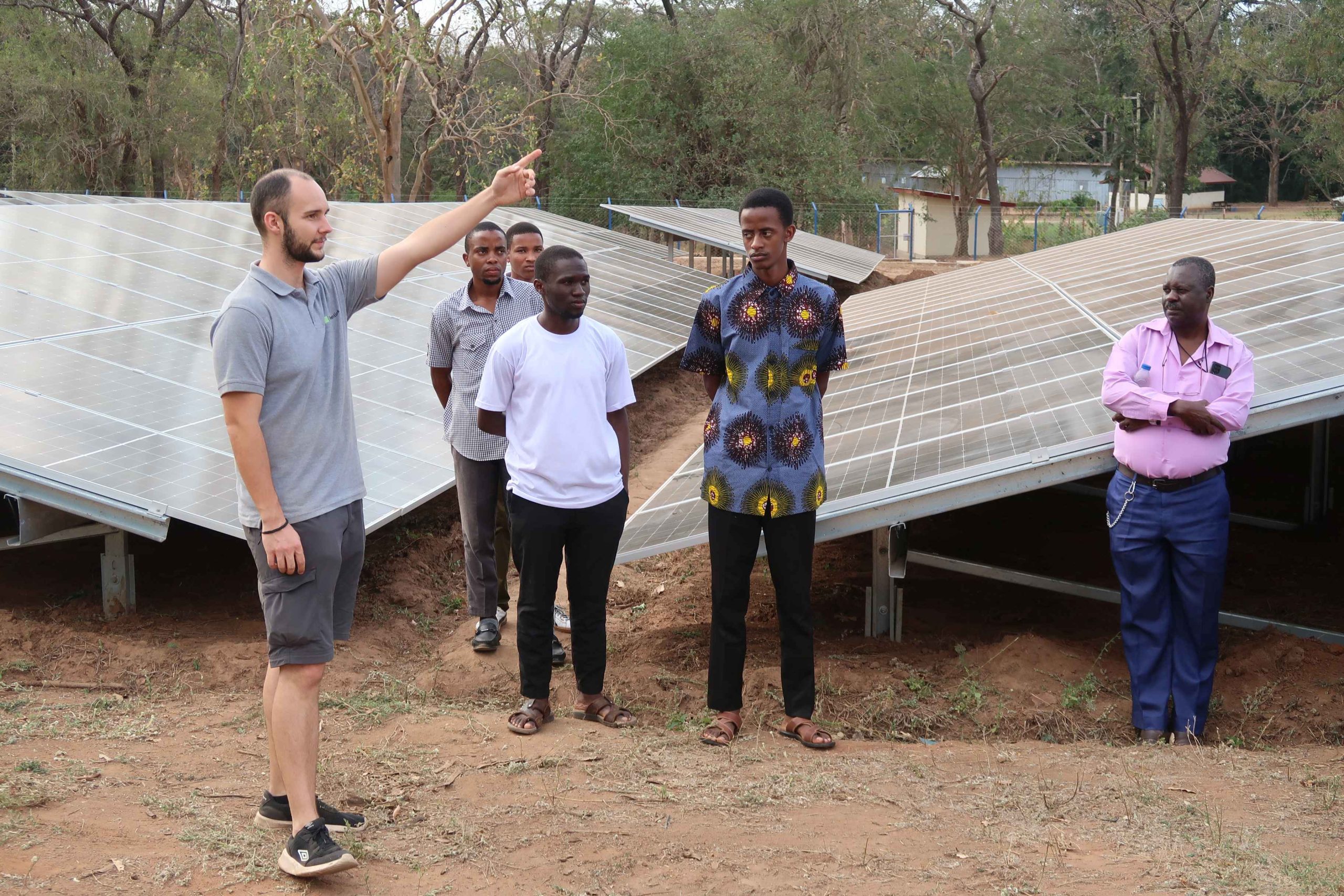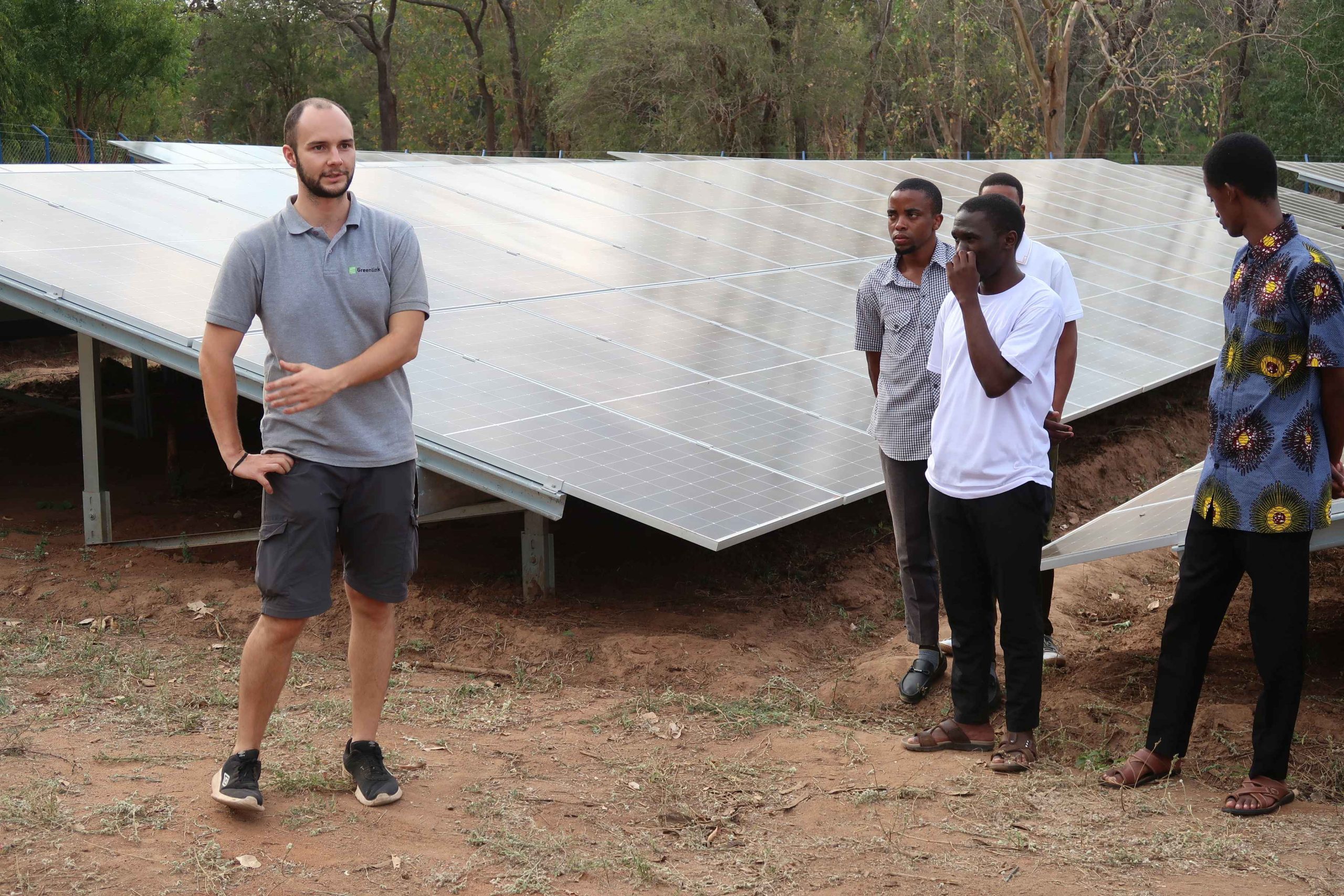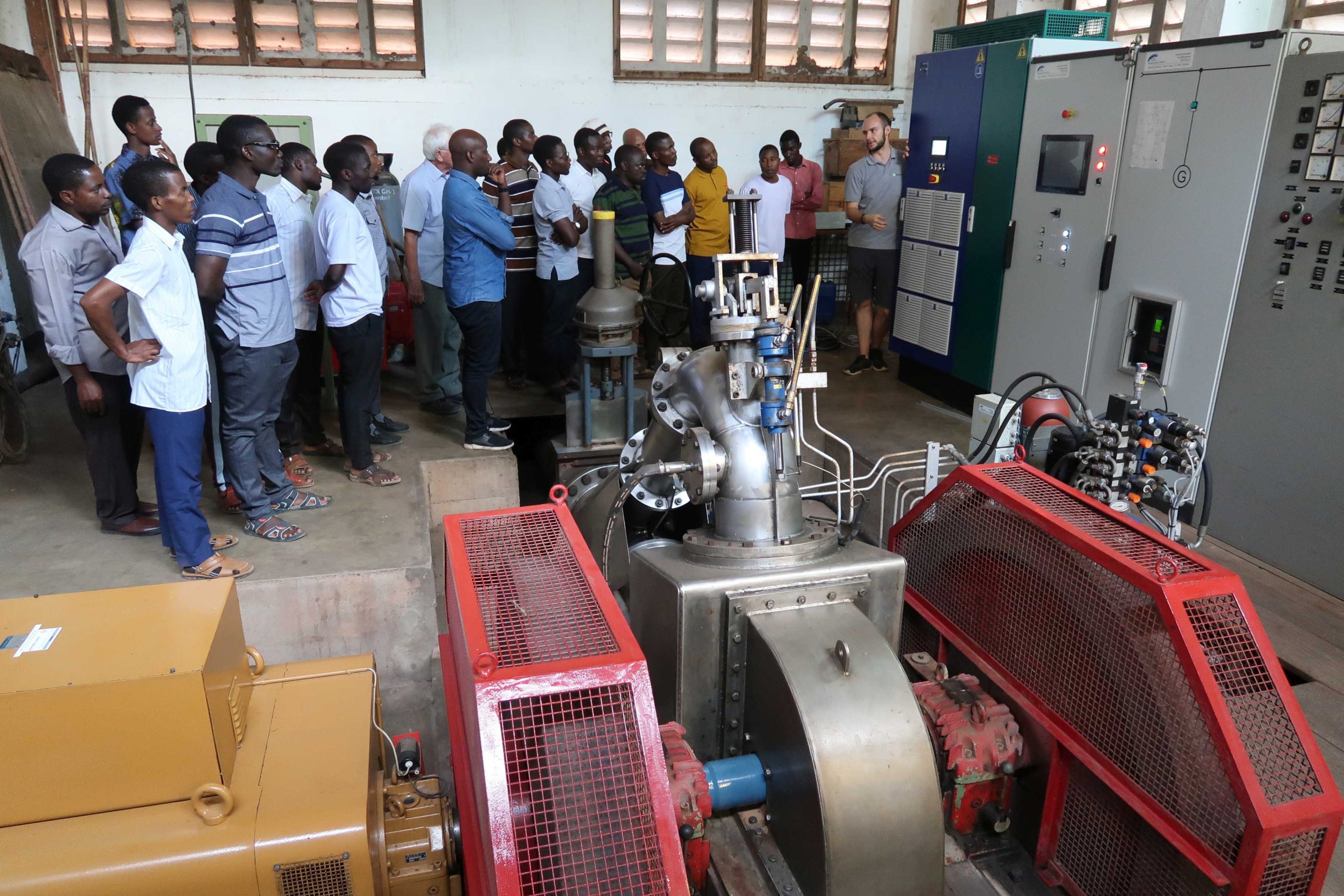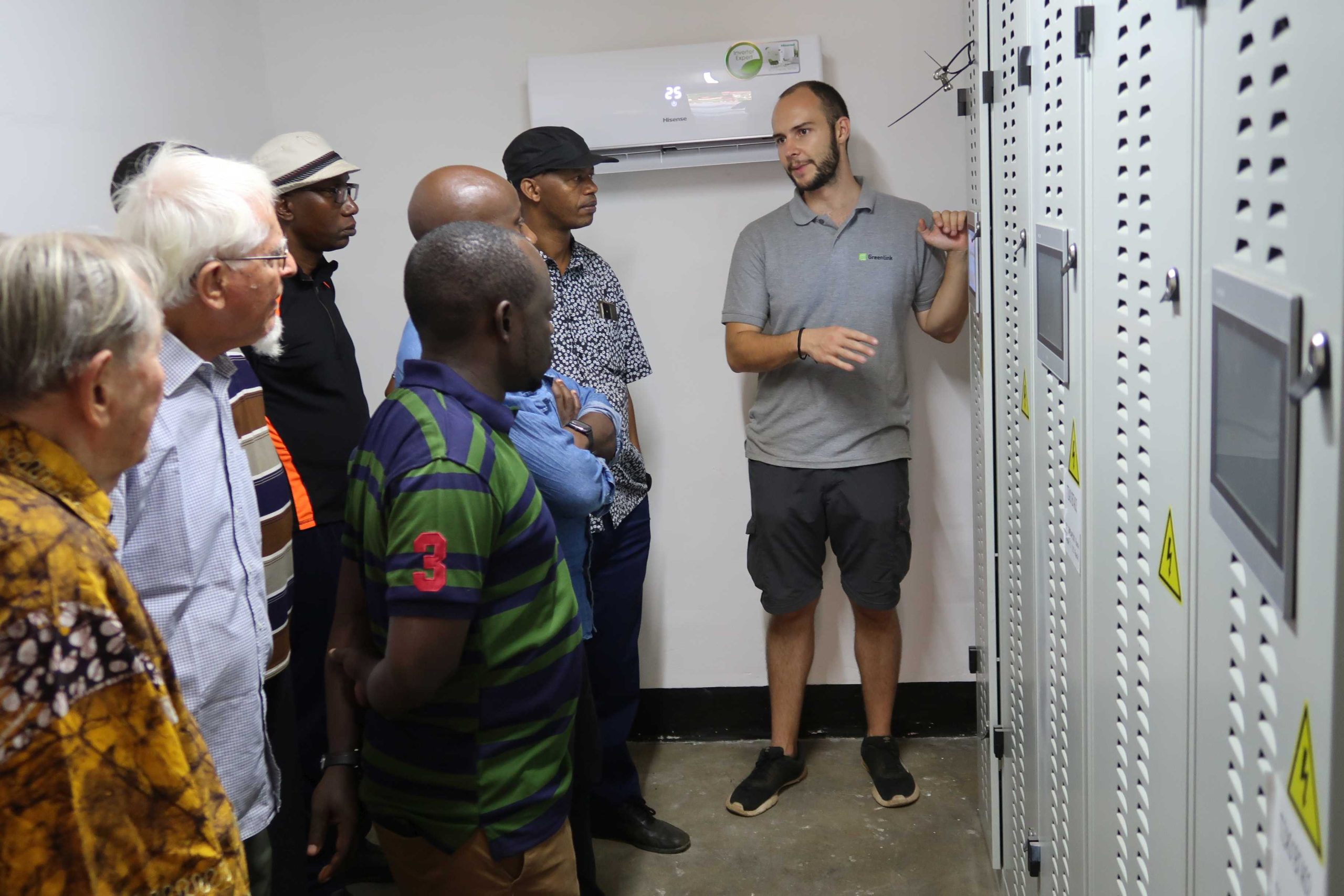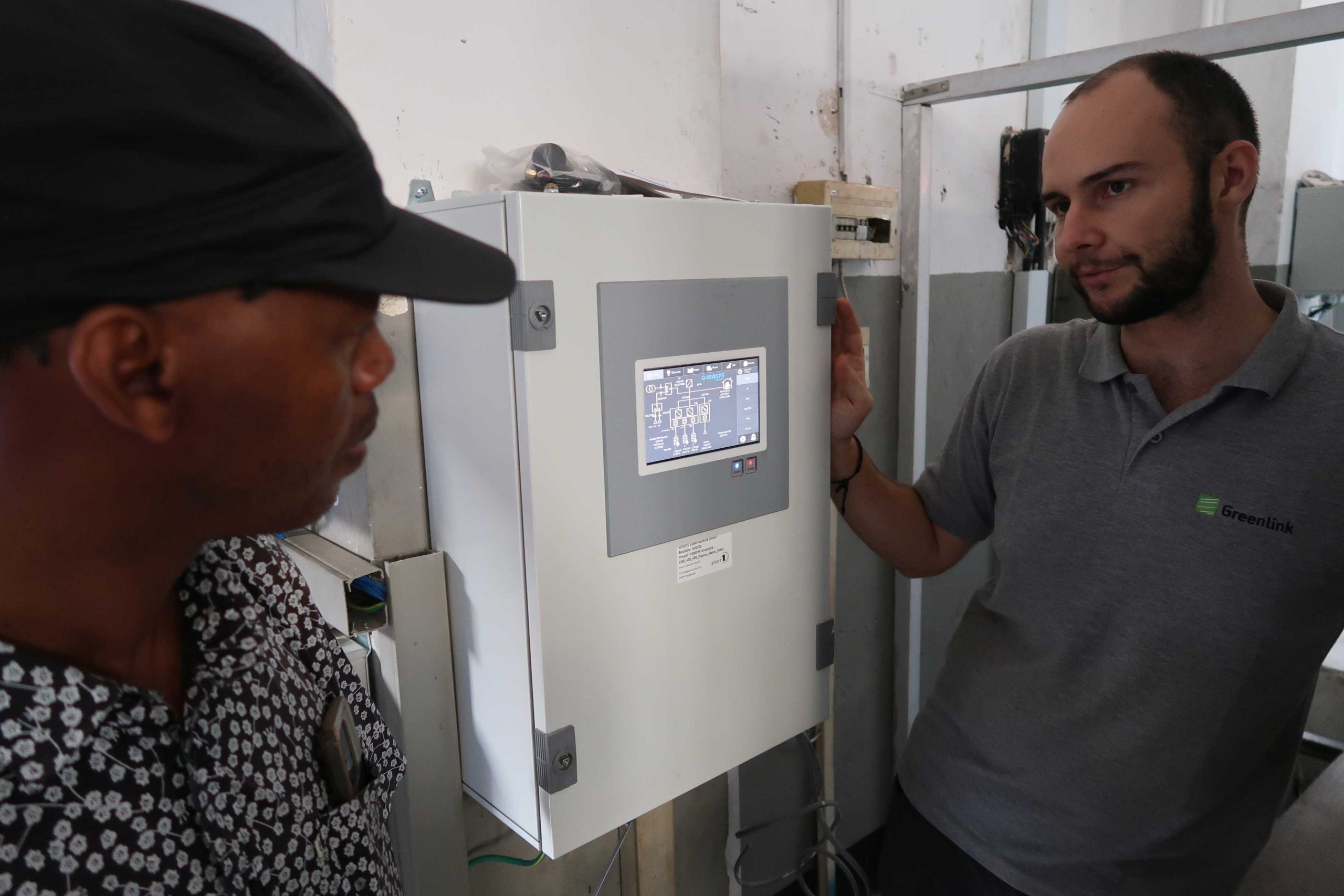Solar Plant
The installation of high-tech equipment in our hospital, such as the oxygen production plant, dialysis equipment, equipment for the intensive care unit, computer tomograph, oxygen filling plant, materials for the central emergency room, numerous computers, etc., has brought a significant increase in power consumption.
All this equipment requires a stable power supply without voltage or frequency fluctuations.
In the past, most of the electricity was supplied by our turbine, which is powered by hydropower. The turbine is capable of supplying a peak load of 160 kW – but the hospital’s demand was recently already up to 220 kW (as of September 2023). Therefore, a generator had to take over most of the power supply recently.
Fortunately, we have found a sustainable solution to this problem. This includes the installation of a photovoltaic system with 300 kWp, a battery with 399 kWh, the integration of the existing turbine and a new, efficient generator.
The electronic control system ensures that the demand during the day is mainly covered by the solar plant. In the evening and at night, the turbine takes over most of the load. The battery stabilizes the system and compensates for fluctuations: When the sun is shining and the load is low, it is charged; when a cloud passes by or the load suddenly increases, it supplies the required energy. The generator is only used when the other systems cannot supply enough power – for example, when it rains all day.
Since water and electricity are available in many places, our project in Ndanda can serve as an example for other energy projects in Africa and beyond.
This large and important project, worth more than €800,000, was made possible by generous donations through the Abbeys of Uznach and Schuyler together with a major contribution from BEGECA.
The electronic control system ensures that the demand during the day is mainly covered by the solar plant. In the evening and at night, the turbine takes over most of the load. The battery stabilizes the system and compensates for fluctuations: When the sun is shining and the load is low, it is charged; when a cloud passes by or the load suddenly increases, it supplies the required energy. The generator is only used when the other systems cannot supply enough power – for example, when it rains all day.
Since water and electricity are available in many places, our project in Ndanda can serve as an example for other energy projects in Africa and beyond.
This large and important project, worth more than €800,000, was made possible by generous donations through the Abbeys of Uznach and Schuyler together with a major contribution from BEGECA.


